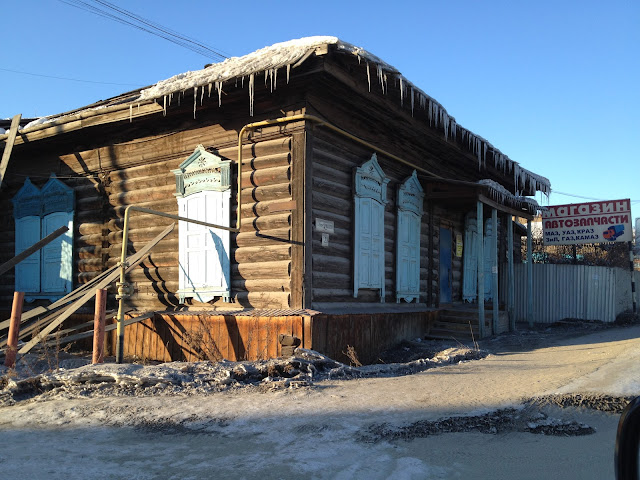Permafrost takes approximately 25% of the total ground area of the globe. The history of the permafrost started 1-2 million years ago. The most ancient frozen stratas were found in the Kolyma lowland in the north of Yakutia. Therefore Yakutia called the cradle of the permafrost.
Permafrost - the main feature of the nature of the North. While mastering the territory occupied by permafrost, a person is faced with enormous challenges. Building large stone multi-storey house in the Far North is extremely difficult, long and costly work...
Two problems are awaiting builders in the permafrost area.
The first - is ground subsidence at thawing of frozen ground, saturated with ice, under the foundations of houses, roads, airfields.
The Second - is bulging of piles, foundations, bridge piers.
The building will be sustainable if don't disturb the permafrost. It is enough to remove a layer of soil or to firm up or to dry, as the properties of permafrost will begin to change.
House is distorted. Thawing of ground is uneven. Where is more will thaw there is more will drown.
The old wooden one-storey houses of Yakutsk which are one hundred years old are still inhabited. But multi-storey stone houses are built with a different technology ...
Now all houses are built on the permafrost on "chicken legs"
"Chicken legs" are huge reinforced concrete piles.
The length of piles is about 12 meters. Diameter is 40 cm x 40 cm (1 cm equals 0,39 inch)
The lower bigger part of them goes deep in the permafrost. Piles protrude by about 1 meter above ground. Then houses are built on these piles...
Piles lying...
These piles are called cold. Inside these piles are hollow tubes. They are filled with kerosene.
In winter, because of the natural circulation of kerosene permafrost gets even more cooler and the power of freezing increases that improves the bearing capacity of pile foundation ...
The air passes freely under house. In winter the ground freezes, in summer thaws. But it doesn't affect the building because reinforced concrete
piles bases firmly frozen into the permafrost, which will never thaw.

























No comments:
Post a Comment